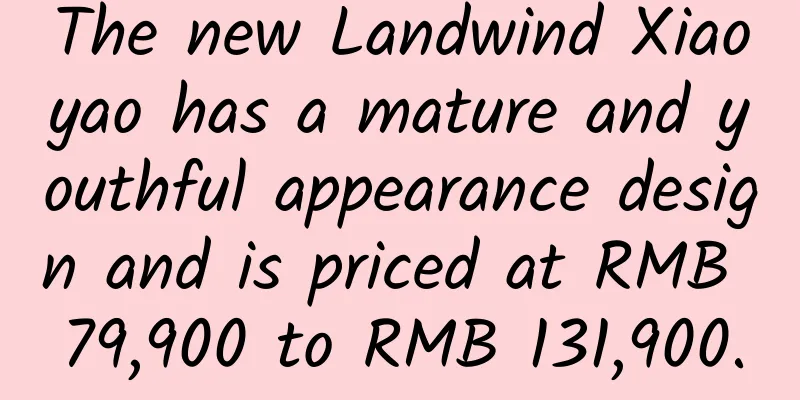What are the current status of the seeds from Hangzhou that returned from space? The regular guests at your dinner table may have "cosmic genes"

|
Space fans are very excited recently. It has been 20 years since the Shenzhou V spacecraft carrying Yang Liwei successfully launched and returned to the ground safely. In the past 20 years, my country's manned flights have evolved from one person for one day, multiple people for multiple days, to two people for medium-term stay, and then to multiple people for long-term stay. So far, 18 astronauts have been sent into space. In addition to humans, a group of special members also went into space with satellites and spacecraft. That is seeds. Among the seeds in space, there are also local varieties of Hangzhou. Which seeds have reached space? This ride is not easy, as the seeds have an arduous task as they have to complete space breeding. This is also the reason why the seeds sent into space mutate. Space breeding is also called space mutagenesis. When seeds are sent into space by returning satellites, spacecraft, space stations and other spacecraft, the special space environment such as strong radiation, microgravity, weak magnetic field, high vacuum and so on will cause them to "mutate" and mutate. After the seeds are returned, scientists will conduct iterative ground planting and screening on them to select new germplasm or new materials and cultivate new varieties of crop breeding technologies. However, sending seeds into space is only a small step in breeding. Liu Luxiang, chief scientist of the National Space Breeding Project, said: "Mutagenesis is actually a part of the breeding process. There are also a lot of identification, screening and cultivation steps. It is not the case that once you go to space, you will get space seeds when you come back." According to statistics, the mutation rate of general seeds in space is only 0.05%-0.5%. There are many seeds that have not changed. Only the "lucky ones" that are hit by cosmic particles will be selected after returning to the ground. At the same time, because gene mutation is non-directional, not all seeds mutate in a good direction. Therefore, only seeds that meet the requirements can be kept. The selected seeds must undergo screening and cultivation for multiple generations, and must also undergo the tests of wind, insects, and drought. Only seeds that have passed these rigorous tests and been approved by authoritative departments are truly qualified space seeds. It has been 36 years since my country launched its first crop seeds into space on August 5, 1987. Shenzhou V brought 1 kilogram of plant seeds, Shenzhou VI brought plant seeds such as begonia, gesneria and Erigeron breviscapus, Shenzhou VII brought 87 varieties of vegetable seeds, Shenzhou VIII brought seeds such as yew and olive, Shenzhou IX brought Yunnan Pu'er tea seeds, Shenzhou X brought ginseng seeds, Shenzhou XII brought orchid seeds from Nanping, Fujian, Polygonatum sibiricum seeds from Jiangshan, Zhejiang, etc. After these seeds take a stroll in space and return to Earth, they will undergo incredible changes. In the past 36 years, my country has been at the forefront of the world in the field of aerospace breeding, from carrying scientific satellites to launching our own breeding satellites and then to completing full-cycle planting experiments in space. Through space mutagenesis, about 300 approved varieties have been bred, covering various food types such as grains, oils, fruits and vegetables. What’s different about the seeds brought back from space odyssey? Like China's manned space program, Hangzhou seeds began to go into space in 2003, even earlier than Shenzhou V. On February 19, 2003, a batch of vegetable and flower seeds returned to Hangzhou after a week of space travel on the Shenzhou IV unmanned spacecraft. The seeds included 18 seeds of three categories, vegetables, flowers, and watermelons, totaling 86 grams, all of which were excellent varieties with independent intellectual property rights in Hangzhou. Zheng Jirong, director of the Vegetable Research Institute of the Hangzhou Academy of Agricultural Sciences, recalled that the academy selected three eggplant varieties, five tomato varieties, two pepper varieties, and five flower varieties to send into space. One of the important selection criteria was to reflect the characteristics of Hangzhou. In fact, the seeds that come back from space every year are sown and cultivated in the ground. In early March 2003, 5,000 flower seeds and 700 vegetable seeds were planted. The flowers included five varieties: petunia, Chinese dianthus, cockscomb, new formosan lily, and impatiens. Immediately afterwards, on April 10, 338 space watermelon seeds were planted at the fruit and vegetable base of Hangzhou Seed Company, announcing that this batch of space seeds of various varieties had all "settled" in Hangzhou. With the careful care of agronomists, more than 300 space watermelons, more than 5,000 space flowers and various space vegetables were eventually cultivated. In these strains, researchers need to evaluate the traits based on the parent materials. Through space breeding technology, the growth cycle of some crops has been shortened; some have increased their disease resistance; some have increased their yields; and some have changed the height of the plants and the color and size of the fruits. Zheng Jirong said that seeds that have experienced space travel have a significant advantage: they stabilize quickly. This can shorten the breeding time. For example, general breeding materials need to go through six generations of screening and elimination, as well as cultivation and observation, and finally select high-generation inbred lines with stable traits before large-scale trial planting can be carried out. Space seeds generally need four generations of selection to stabilize. Many delicacies on the Hangzhou table are "chosen by the universe" In Hangzhou, which varieties were selected and successfully bred by Universe? Eggplant variety "Hangqie 2010" You wouldn't have thought that this frequent guest at Hangzhou dinner tables has cosmic genes. "Hangzhou Eggplant 2010" is the successor of "Hangzhou Eggplant No. 1" which once dominated the eggplant fields in Zhejiang. It has a long and straight fruit shape, good low-temperature resistance, and good continuous fruiting ability. The most outstanding feature is its smooth and beautiful, bright purple-red "appearance". Once launched, it became a "rising star". "Hangzhou Eggplant 2010" has been listed as the leading variety in Zhejiang Province for 6 consecutive years. It is a famous Hangzhou eggplant variety that is a breakthrough and milestone. Hangzhou eggplants are soft and glutinous, with a smooth texture, and they become mushy once steamed. Hangzhou people like to steam them with rice, pour out the water in the dish, add some seasoning, and it becomes a delicious "quick dish". There is also fried eggplant with sauce, which is stir-fried with Hangzhou eggplant and Hangzhou pepper. The skin is crispy and the flesh is tender and glutinous. It is suitable for all ages and goes well with rice. Talking about this variety, Zheng Jirong said proudly: "This can be said to be the most representative space variety in Hangzhou!" Tomato "Hangza No. 3" Speaking of it, Zheng Jirong feels a little bit sorry because this tomato variety is not planted much because the fruit is small. "It was very good at the time, with good commercial value. The single fruit weight of 130-150 grams was outstanding among similar varieties. It was also very resistant to viral diseases. It was the first new tomato variety approved in the province to be resistant to both TYLCV and root-knot nematode disease. It played an important role in changing the situation in which autumn tomatoes were easily damaged by TYLCV, resulting in a significant reduction in production. However, competition among tomato varieties is too fierce, and now some are 220 grams." In any case, the "Hangza 3" has appeared on the dining tables of Hangzhou residents, bringing a taste of space to everyone. However, most people are not aware of it. "Shenzhou Red" This is a new variety of Salvia miltiorrhiza, finalized in 2006. It looks like a string of firecrackers and is often used as the main ornamental flower to decorate large flower beds. It is a little red among the green. In the flower beds and flower borders of major parks and green spaces in Hangzhou, you can see the festive appearance of "Shenzhou Red", embellishing the city scenery. The project "Research on Space Breeding Technology of Vegetables and Flowers and Selection of New Varieties" hosted by the Municipal Academy of Agricultural Sciences won the first prize of Hangzhou Science and Technology Progress in 2014. Space whole plant purple corn This autumn, in the 224-acre "Linping Base of Space Breeding Purple Industry Park" in Qijiaqiao Village, Yunhe Street, Linping District, a bumper harvest of space purple corn was achieved. This is a new variety cultivated by the National Space Breeding Achievement Transformation Center in the space breeding project. The biggest difference from ordinary purple corn is that its anthocyanin content is extremely high, which is 6-8 times that of ordinary purple corn, 4-11 times that of blueberries, and 8-9 times that of purple potatoes. Just by extracting anthocyanins, the average income per mu can reach at least 60,000 yuan. In addition, the whole plant of space purple corn is rich in calcium, zinc, selenium, protein, etc. After extracting anthocyanins, the purple corn can also be used as raw materials to make tea, craft beer, coffee, handicrafts, etc. for "secondary use". It can be said that this corn is full of treasures. Han Chenke, reporter of Metropolis Express and Orange-Persimmon Interactive |
>>: AI can beat various world champions, but becomes an "amateur" when playing cards!
Recommend
Is Windows a pseudo-open source?
A recent report that Windows may become open sour...
Desktop CPU + desktop-level graphics card. How powerful is the world's most powerful gaming laptop?
Gaming experience has always been an important us...
How to avoid the “illusion of traffic” and design a successful marketing campaign?
We know that any economic operation or business m...
How to choose a good Internet marketing promotion company?
The Internet continues to develop, and online mar...
Second category e-commerce marketing tips, save it!
There is only one day left for the National Day h...
Why do I keep going to the toilet after drinking milk tea or coffee? ? ?
Planning and production Source: Curious Doctor Ed...
Mixed infection has occurred! Doctors remind that the popular "three-piece set" for Mycoplasma pneumoniae infection should be used with caution!
Edit: Thanks Autumn and winter are the peak seaso...
Popular Science Illustrations | Increase your knowledge! Is there another way to “visit” a museum?
...
What are the minefields in Xiaohongshu’s promotion and operation? Getting Started Manual!
Xiaohongshu, which started out as a UGC community...
Why can't you stick your smartwatch on the glass of a high-speed train? Because you might not be able to take it off...
Produced by: Science Popularization China Author:...
Promotion and Marketing | How to quickly generate a landing page with a high conversion rate?
As traffic dividends disappear and corporate cust...
Do you really need a 9.7-inch iPad Pro?
Just now, Apple's twice-a-year new product la...
The mosquito repellent products you buy only have these ingredients that really work...
As the weather warms up I believe someone has Bec...
"Non-fried", "0 additives", "0 sucrose", how many health traps in snacks have you fallen into?
After get off work in the evening, my good friend...









